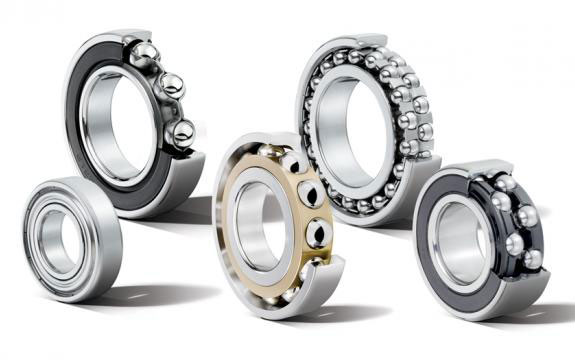The Different Types of Ball Bearings
There are several different types of ball bearings. This article will cover Angular contact ball bearings, Self-aligning ball bearings, Double row deep groove ball bearings, and Tapered roller bearings. Each type has its own unique characteristics and uses. In addition, this article will explain how each type differs from the other. In addition, we'll touch upon how each type differs in speed. Once you've mastered all of them, you can use them to choose the right type for your needs.
Angular contact ball bearings
Angular contact ball bearings are cylindrically-shaped, precision machined parts that have an offset inner and outer ring. They are designed for axial and radial loads and are available in single-row, double-row, matched pair, and four-point contact types. The angular contact ball bearings are ideal for applications requiring high speeds and precision. Unlike other bearing types, they can handle both radial and axial loads.
Angular contact ball bearings are characterized by their internal design. Because of their internal structure, angular contact ball bearings can withstand radial and axial loads at high speeds. Normally, angular bearings are mounted in groups of two or more units and are fitted into elastic or rigid spacers. Chrome steel is commonly used to create the inner and outer raceways. Angular contact ball bearings can also withstand high-speed, heavy-duty radial and thrust loads.

Self-aligning ball bearings
The main difference between ball bearings and self-aligning ball bearings is their design. Self-aligning ball bearings are spherical bearings with an outer ring whose center of curvature matches that of the inner ring. As a result, the inner ring can freely rotate around the outer ring, maintaining alignment. While radial load is the major characteristic of self-aligning ball bearings, they are not suitable for pure thrust loads. They are available with tapered bores or cylindrical bores.
Self-aligning ball bearings have two rows of rolling elements that are located inside a spherical raceway on the outer ring. The balls are surrounded by a cage, which swivels relative to the outer ring. Because of the low friction inside the bearing, it can compensate for shaft misalignment of up to three degrees. This design also allows the shaft to rotate at a higher speed while generating less heat. Self-aligning ball bearings can be used in applications where shaft misalignment is a significant factor.
Double row deep groove ball bearings
There are many different features of deep groove ball bearings. They require a sufficient load to prevent slippage, and the internal clearance must be close to or equal to the specified minimum. This tolerance is usually higher than required. This article will discuss different options for mounting deep groove ball bearings. We'll also cover what to consider when sizing your new bearing. And, of course, how to choose the proper bearing type for your needs.
Single row deep groove ball bearings are limited in the amount of angular adjustment they allow, and they're only good for small amounts of misalignment. If you need to compensate for angular misalignments, double-row bearings are the right choice. Double-row bearings don't have this facility, and their radial capacity is generally higher than single-row bearings. Regardless of your operating conditions, Simply Bearings has the right deep-groove bearing for your application.
Tapered roller bearings
There are several different kinds of ball bearings, and tapered roller bearings are a particular type. Most tapered roller bearings are made of low-carbon steel, while some applications require high-carbon bearing-quality steel. High-carbon grades of steel can be case-hardened through induction heating or conventional heating methods, while low-carbon carburized steel is usually added after cylindrical roller bearings are machined to a specified depth. Both carbon and alloys are important for these bearings, as they provide the proper combination of hard case and tough core.
The basic difference between tapered roller bearings and other types of ball bearings lies in their capacity. Dynamic capacity is the ideal way to determine a bearing's ability to withstand a load and to resist fatigue. This capacity is derived from the number of revolutions a bearing will experience at a load. When comparing tapered roller bearings to other types of ball bearings, their dynamic capacity may seem low, but this is due to the fact that they use a different base.
- Previous: Benefits of Deep Groove Ball Bearings
- Next: Advantages and Disadvantages of Ceramic Ball Bearings











